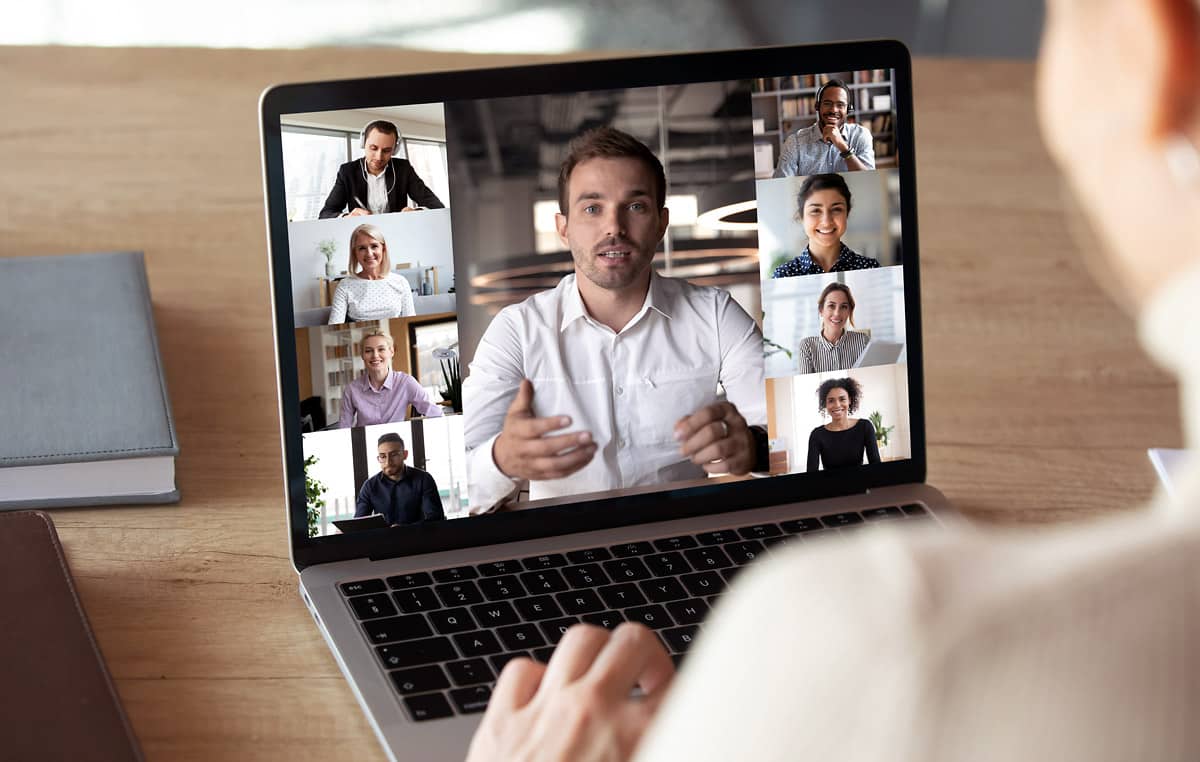
Workplace Strategy: Everything You Need to Know
Let’s start by answering the question: What is workplace strategy? According to Work Design Magazine, a publication focused on issues, innovations and ideas around the workplace, the concept is defined as, “Workplace strategy encompasses an organization’s goals and values – what is it trying to achieve and how is it trying to achieve it? These messages are crafted and delivered through a variety of subtle and not-so-subtle communication channels. When done well, they have a positive impact on employee engagement, loyalty, and innovation. When done poorly due to inconsistent, infrequent, or unclear messaging, they impair the ability to deliver on the company brand.”
If you’re responsible for workplace strategy in your organization, check out our webinars for tips around automation, COVID-safety and more.
Benefits of an Effective Workplace Strategy

A workplace strategy can be successfully implemented in any type of industry or business.
Having an effective workplace strategy in place can greatly impact a company’s success, including benefiting the bottom line.
Writing about the importance workplace strategy, Francisco Acoba, Managing Director in the Real Estate & Location Strategy practice at the global professional services network Deloitte, puts it this way, “An efficient advanced workplace strategy integrates the key elements of physical space design, information technology (both infrastructure and devices), and effective HR policies to better enable work and increase operational efficiency. Properly deployed, an advanced workplace strategy can be a significant driver of real estate portfolio savings and contribute to talent recruitment and retention programs.”
Acoba listed 5 benefits that an effective workplace strategy program can have, including:
- Efficiency and flexibility in the use of office space that is traditionally dedicated, expensive, and often unoccupied, typically leading to a 20-50 percent improvement in asset performance.
- Mobile technology tools that enable access and collaboration on demand – anytime, anywhere.
- Flexibility and choice for employees to be productive from a variety of work settings, including corporate sites, customer locations, at home, etc.
- Increased opportunities for virtual and face-to-face collaboration, fostering the belief that the role of the “office” is to enable interactions that enable key business priorities such as innovation, knowledge sharing, and speed-to-market.
- Significant cost savings associated with the real estate portfolio, through the identification of space-reduction opportunities and changing workspace standard
To summarize the benefits of an effective workplace strategy, we are sharing a blog post with some key information published by real estate consulting firm Watchdog Real Estate Project Management. Watchdog Real Estate Project Management explains the advantages of workplace strategy with the following, “The goal of workplace strategy is to align the physical office space with the company’s business strategy, goals and corporate culture. What works for one company, will not automatically work for another. Workplace strategy looks at the organization as a whole and how the physical office should be set-up, including spacing, branding, furniture, technology and more, and thoughtfully designs a space that will enrich the company’s business goals.”
Developing Your Workplace Strategy

Figuring out the best workplace strategy for your business may not be a simple task. As you start to come up with your own plan, it is important to keep in mind that there is no one-size-fits-all approach, and each company is different. But, with that said, there are some best practices that you should consider when crafting your strategy.
According to Annelie Xenofontos, Senior Workplace Strategist at Axiom, a creative workplace design company, “A good design is based on hard data and observations about how people work, and it aims to create a workplace that will support the business’s goals and strategy long into the future, as the business grows and evolves.” That article on their site continues onward to say, “A workplace strategy demands a significant amount of analysis, study and expertise. Some of the common areas to explore are office space utilisation and employee data, office design, facilities management and planning for the company’s future (considerations that may be missed if you jump to your office fit-out requirements without a strategy in place).”
Xenofontoslists the following 6 steps to consider when developing a workplace strategy:
- Audit your current work environment
- Understand how space is currently being used
- Get input from a variety of people in the business
- Consider the future
- Select the right workplace technology
- Consider costs
Delving Deeper

There are many consultants and companies in the marketplace that can help your business achieve a high-functioning workplace strategy. One such company is Advanced Workplace Associates (AWA), which has locations in New York, London and Paris and boasts that they help “organisations make a step change in the performance of their people and workplaces.”
When crafting workplace strategies, AWA says they help their clients answer the following 10 questions.
- How do we move to a remote workforce where our employees are working from home?
- Could we move to a totally ‘virtual’ model with no office space at all? Will this reduce costs?
- What workplaces, locations and workplace experiences do we need to propel our business forward?
- How do we create a workplace experience that will inspire our current people and be magnetic to top talent?
- Our lease is going to expire, should we relocate, redesign or move to a virtual organisation model?
- Can we introduce agile/activity-based working and how do we use this working style to enhance performance?
- How much space do we really need?
- Where should we be located?
- How do we increase human productivity, energy & collaboration?
- How can we grow our own headcount without extending our fixed cost base?
Workplace Strategy of the Future

COVID-19 forced many industries to shift into a remote modality, meaning employees had to work from home in order to maintain public health. Research – including data gathered at Smartway2– has shown that workers do not want to return to their office full-time once it is safe to do so, but neither do they want to continue working from home full-time. Instead, workers prefer a hybrid model which would allow for a flexible schedule that includes some days in the office and some days at home. As a result, both employees and employers have recognized that COVID-19 will likely be a geological event for much of the workforce, forever changing how and when people do their jobs. In turn, this will affect workplace strategy.
CIO Magazine, a publication that focuses on technology and IT, has written about and covered extensively this workplace shift. An opinion piece published in CIO Magazine by Alex Bennett, Vice President of Intelligent Workplace at global Technology Services company NTT Ltd. reads in part, “Studies show 75% of employees prefer to work from an office versus home. When safe to do so, building the workplace strategy of tomorrow will mean more than just reviewing policies. It will require a rethink of the technology – infrastructure, business applications, collaborative solutions, and the checks and balances in place to secure new environments – that will underpin those policies.” According to Bennett, “The workplace strategy that CIOs define now will have a knock-on impact on culture, technology, and location – the three cornerstones to improving the employee experience. In addition, every strategy should be underpinned with robust security to protect new environments and employee data—that way, the chosen technology does not expose what it’s meant to protect.”
Smartway2 is a next-generation technology company that helps organizations increase productivity and agility, by enabling employees to book office facilities in advance – from meeting rooms and desks, to parking and AV equipment.


